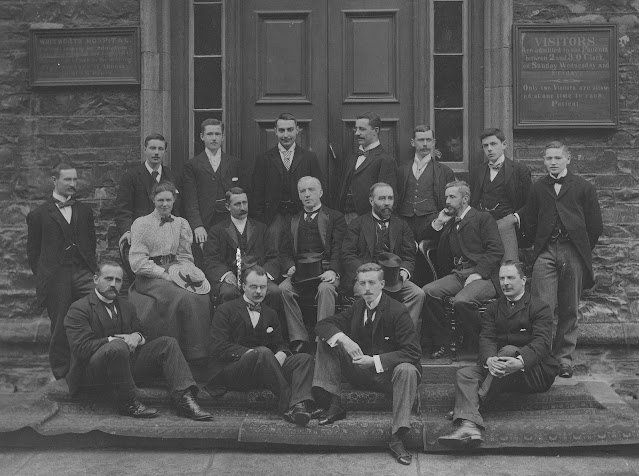Gender is one of the core pillars of equality, diversity, and inclusion implementation at RCSI, with our dedicated EDI Unit spearheading various initiatives that promote equality between women and men and embrace the right of all individuals to be treated equally regardless of gender identity and gender expression.
 |
RCSI Medical School Class of 1970 |
Access to education was a significant barrier to ambitious young women. Girls were rarely afforded as intellectually rigorous or well-rounded an education as that received by boys: though she was generally well-read, the skill set of an accomplished young women in society was often deemed to extend no further than a thorough knowledge of the arts as well as proper etiquette and deportment. Women were routinely excluded from higher education and the professions on the grounds of the social and biological inferiority prescribed by their gender. Indeed, an 1873 publication titled ‘Sex in Education’ went so far as to warn against female participation in higher education on the basis that “higher education in women produces monstrous brains and puny bodies, abnormally active cerebration and abnormally weak digestion, flowing thought and constipated bowels.” Hmm.
Female students were finally permitted to enter RCSI under the terms of a Royal Charter issued by Queen Victoria in 1885. This same Charter also granted women permission to sit the Licentiate and Fellowship examinations at RCSI:
Despite this, and perhaps unsurprisingly given the social context of the time, women remained in the minority at RCSI for many years to come. The first female student, Agnes Shannon, entered RCSI in 1885, while Emily Winifred Dickson holds the joint honour of becoming the first female Fellow of RCSI in 1893 and thereby the first female Fellow of any of the surgical royal colleges in Great Britain and Ireland. Ten women appear in the Roll of Licentiates during the first decade of their being permitted to sit the Licentiate examinations that allowed them to practice. By 1915, just 5% of registered medical students at RCSI were women.
The number of women entering and graduating from medical school increased dramatically in the 1960s. In the period 1965-2005, the percentage of female students graduating in medicine from RCSI was on average 32%, with the ratio of male to female students increasing steadily during this time before finally tipping in favour of women for the first time in 2003 with 53% female graduates. This trend continues today with a split of 53% female vs 47% male across the RCSI undergraduate medical student population in the 2020/21 academic year.
The list of female firsts at RCSI might begin in 1885 but it continues to grow apace to this day. Just over a decade ago in 2010, RCSI elected its first female President, Eilis McGovern, in the College’s almost 240 year history. In 2017, RCSI published a comprehensive report, PROGRESS: Promoting Gender Equality in Surgery, which highlighted that despite more than 20 years of gender parity among medical graduates, the proportion of female consultant surgeons remains low at <7%.
Participation and representation of women in surgical practice and in leadership and management roles across the healthcare community remain key drivers for gender equality at RCSI today. We’ve come a long way, but there’s a long road ahead as well.



